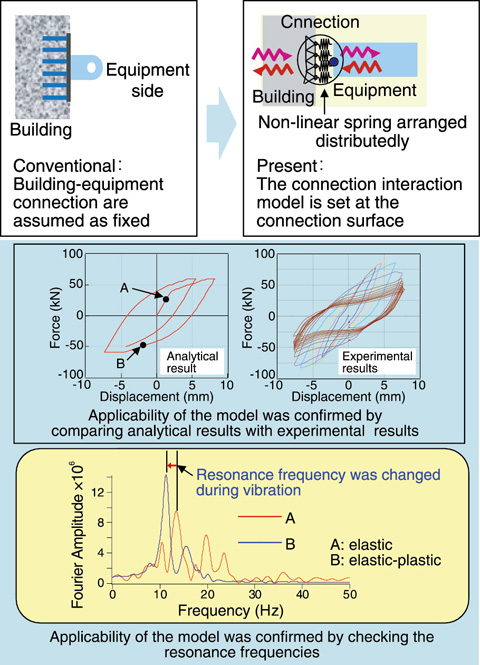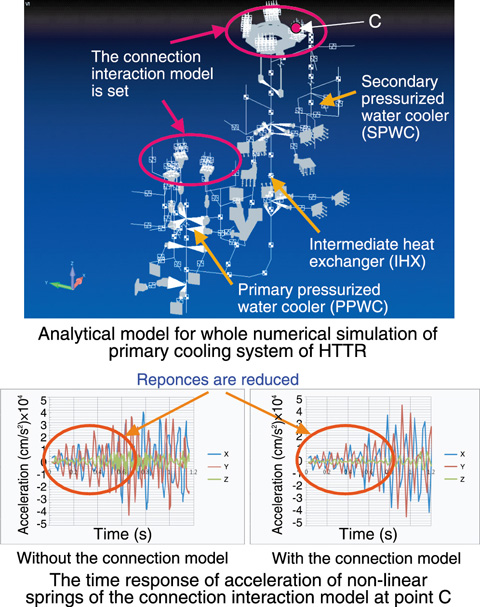
Fig.11-5 Connection interaction model between buildings and equipment

Fig.11-6 Real entire-plant analysis with connection interaction model
Nuclear facilities are composed of a large number of equipment, and it is necessary to evaluate realistic responses of each of these equipment to earthquakes in order to ascertain earthquake resistance safety. In particular, it is important to know which types of wave propagate into the building through the connection; in other words, it is important to know the detailed wave propagation properties of the connection (wave transmission and reflection), because equipment response is evaluated using building response. Because the connection between buildings and equipment is a concrete structure, it is usually assumed to be a fixed boundary to simplify the elucidation of its wave propagation properties. However, recent experimental results have suggested that a slight displacement or gap can occur at the connection for large inputs, and it has become clear that the assumption of a fixed boundary is not appropriate in such instances.
Therefore, we have attempted to express wave propagation properties at the connection to model force-displacement relationships based on experimental data. We devised force-displacement relationships for each micropart directly by arranging nonlinear springs dispersively on the boundary surface in order to consider historical properties such as the partial gap at the connection. We confirmed the applicability of the connection interaction model by comparing our analytical results with experimental results and confirmed the resonance frequencies before and after the nonlinearization of the connection, as shown in Fig.11-5.
Furthermore, we conducted earthquake response analysis of the entire cooling structure of a nuclear facility incorporating the connection interaction model using a large earthquake input, for which part of the building-equipment connection becomes nonlinearized, to confirm the applicability of the connection interaction model to the real plant. Fig.11-6 shows a model of the entire cooling structure of the high-temperature engineering test reactor (HTTR) and our analysis results. We were able to confirm that the equipment response was reduced because of historical energy absorption by nonlinearization of the connection in the case with the connection interaction model. On the basis of these results, we were able to assess the potential for use of the connection interaction model in earthquake resistance evaluation.
It is expected that more detailed analysis will be necessary for evaluation of the earthquake resistance of nuclear plants. Furthermore, we expect that as the representation of the behavior of nuclear facilities during earthquakes improves, we will be able to share more detailed information with the general public.
The present study is the result of the project entitled “Development of physical model describing the dynamic interaction characteristics of component connections for the analysis of an entire nuclear facility” entrusted to the Japan Atomic Energy Agency by the Ministry of Education, Culture, Sports, Science and Technology of Japan (MEXT).
<Previous: 11-2 | Next: 12 Scientific & Technical Development for Nuclear Nonproliferation >